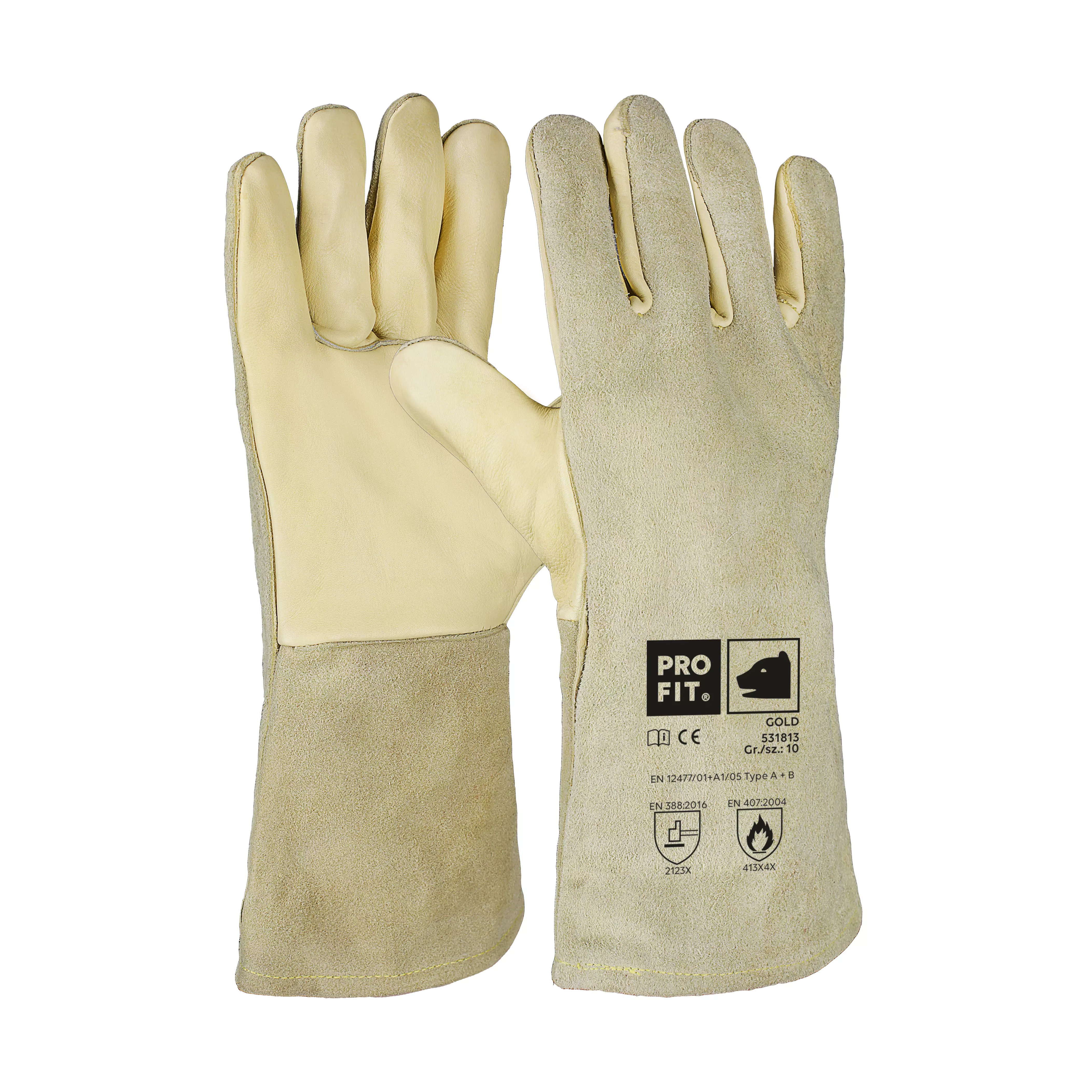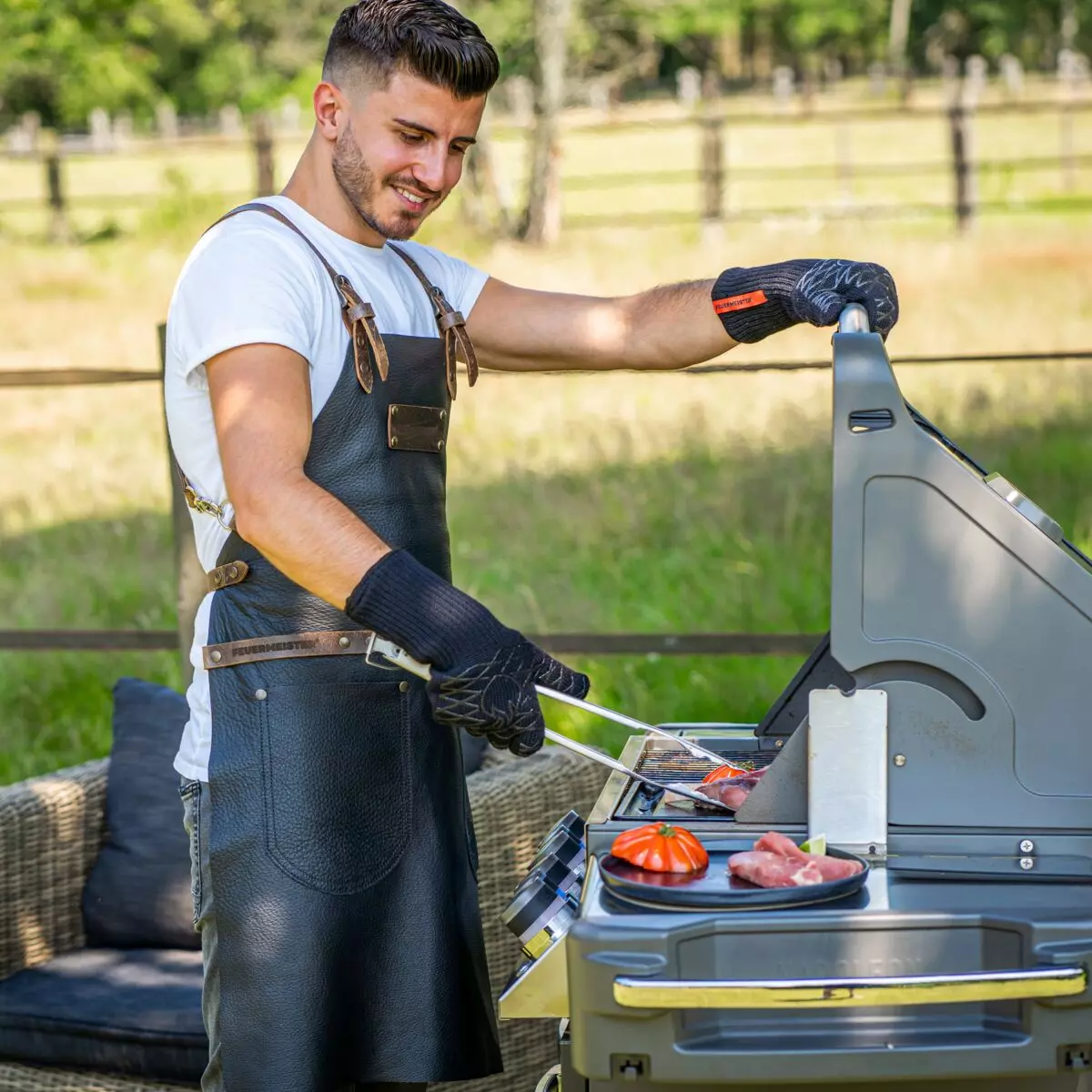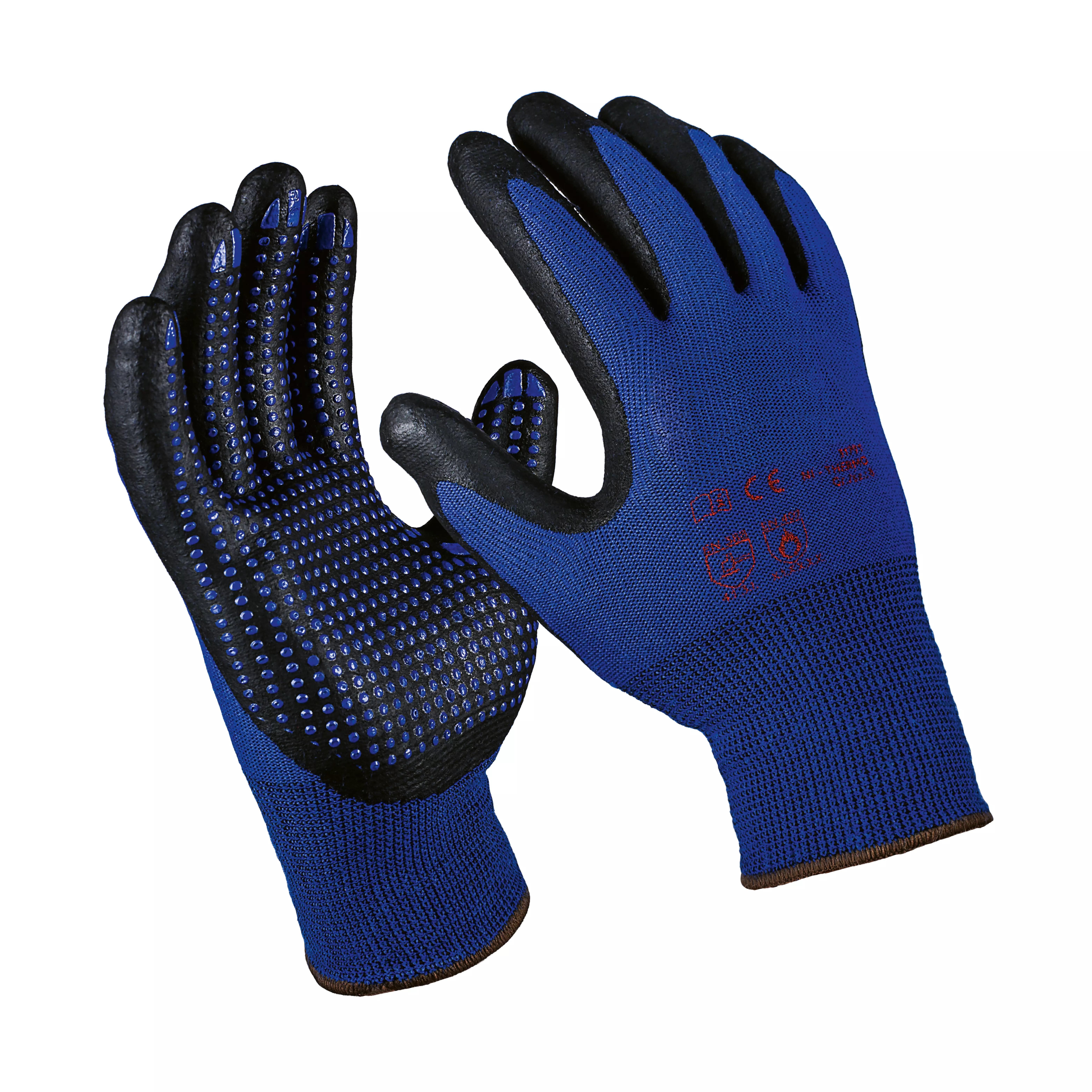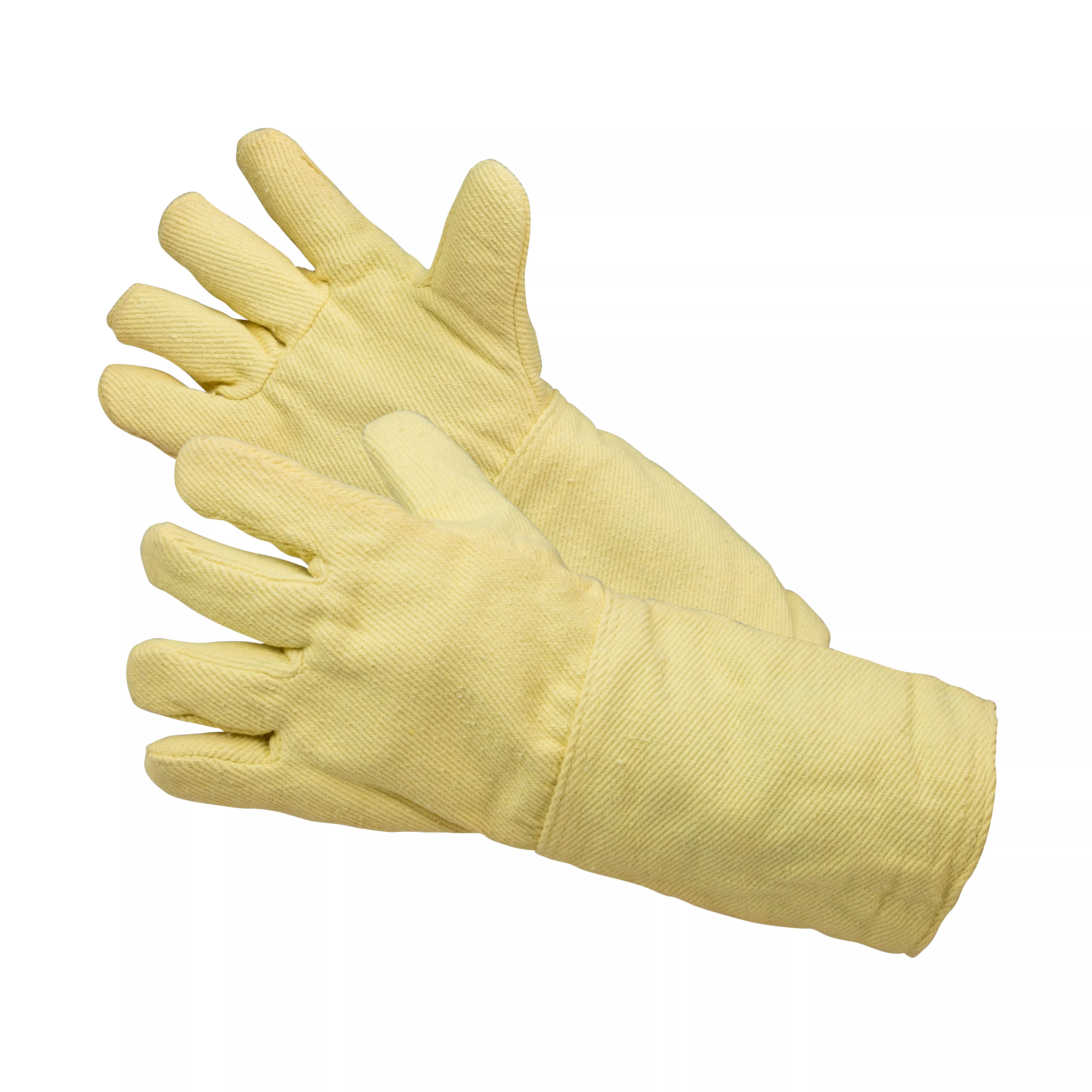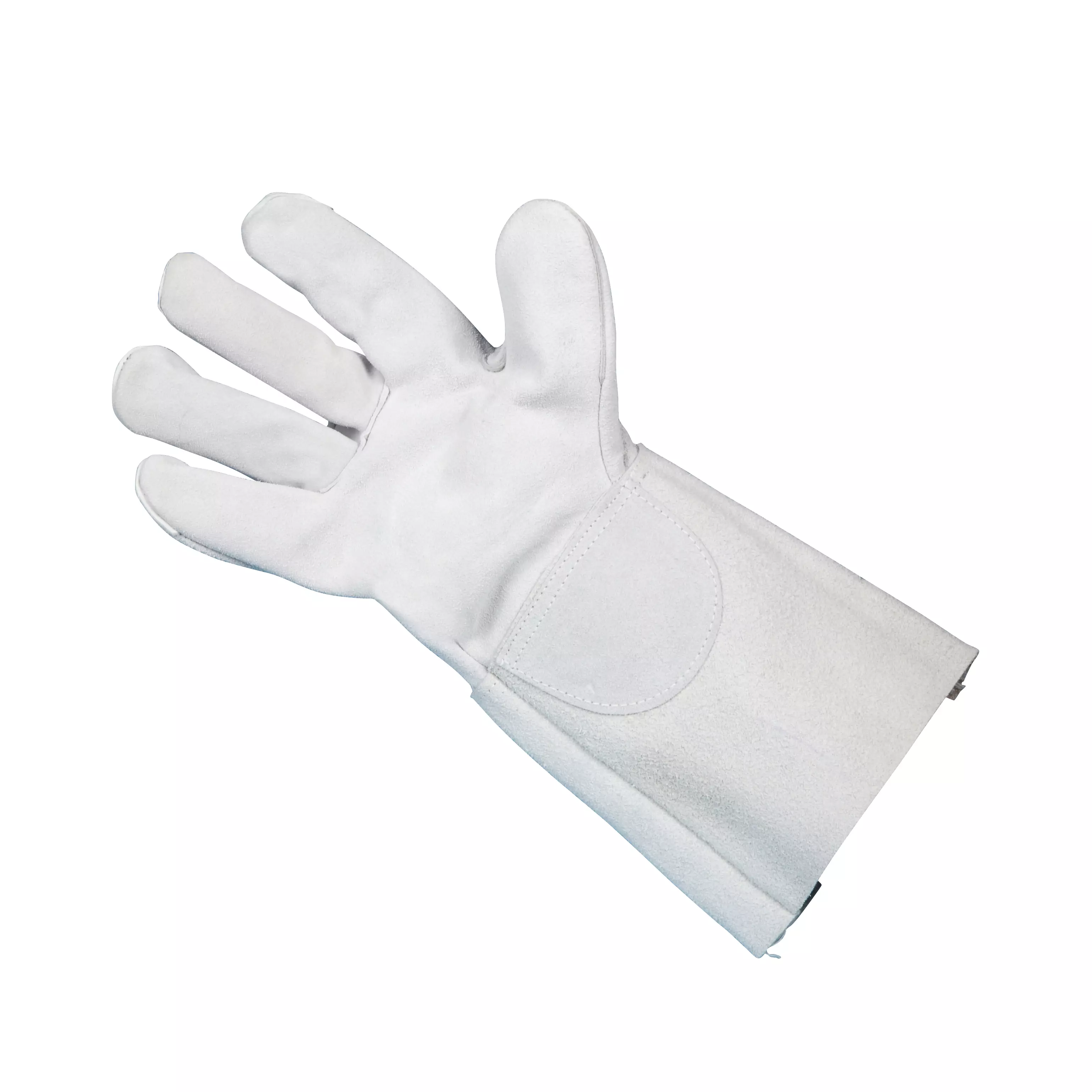Buy heat protection gloves
Our heat protection gloves are ideal for working with warm and hot objects and offer protection up to a contact heat of 500 °C.
Available, delivery time: 1-3 days
Content: 5 pair (€21.45* / 1 pair)
Available in 12 days, delivery time 1-3 days
Content: 12 pair (€3.86* / 1 pair)
Available in 10 days, delivery time 1-3 days
Available, delivery time: 1-3 days
Available, delivery time: 1-3 days
Hitzeschutzhandschuhe bieten zuverlässigen Schutz bei Arbeiten mit warmen und heißen Gegenständen
Bei Arbeiten mit Hitze oder Wärme sind Hitzeschutzhandschuhe zu tragen, die nicht nur gegen Strahlungswärme, sondern auch gegen Kontaktwärme wirksam schützen.
Das bedeutet, dass sie die Hände vor dem direkten Kontakt mit heißen Oberflächen schützen. Für bestimmte Arbeiten wie Flexen oder Schweißen empfiehlt sich das Tragen sogenannter Schweißerhandschuhe, die nicht nur gegen konduktive, sondern auch gegen Strahlungs- und Kontaktwärme isolieren.
Durch die Verwendung von Materialien wie Aramid in der Beschaffenheit der Hitzeschutzhandschuhe werden die Hände auch vor mechanischen Risiken und Schnittverletzungen geschützt. Diese Arbeitshandschuhe werden in den unterschiedlichsten Branchen eingesetzt und sind aufgrund ihrer Hitzebeständigkeit auch in Gießereien oder Bäckereien zu finden.
Was macht einen Hitzeschutzhandschuh aus?
Hitzeschutzhandschuhe schützen zuverlässig vor Wärme und Hitze, indem sie eine auf Prüfwerten basierende Isolierleistung gegen hohe Temperaturen bieten. Sie schützen nicht nur vor Strahlungswärme, sondern auch vor Kontaktwärme, die entsteht, wenn die Haut direkt mit einem heißen Gegenstand in Berührung kommt.
Je nach Ausführung des Arbeitshandschuhs kann die maximale Kontakthitze bis zu 500°C betragen. Neben der Hitzebeständigkeit können weitere Eigenschaften wie Abriebfestigkeit und Strapazierfähigkeit entscheidend sein. Darüber hinaus gibt es Modelle, die gleichzeitig einen Schnittschutz bieten und vor Verletzungen durch scharfkantige Gegenstände schützen.
Um die Griffsicherheit zu erhöhen, sind die Arbeitshandschuhe teilweise mit Noppen versehen. So kann sowohl in trockener, öliger als auch in feuchter Umgebung gearbeitet werden. Der Handschuh ist dann entsprechend wasserabweisend. Aufgrund der Materialauswahl sind Hitzeschutzhandschuhe atmungsaktiv und angenehm zu tragen.
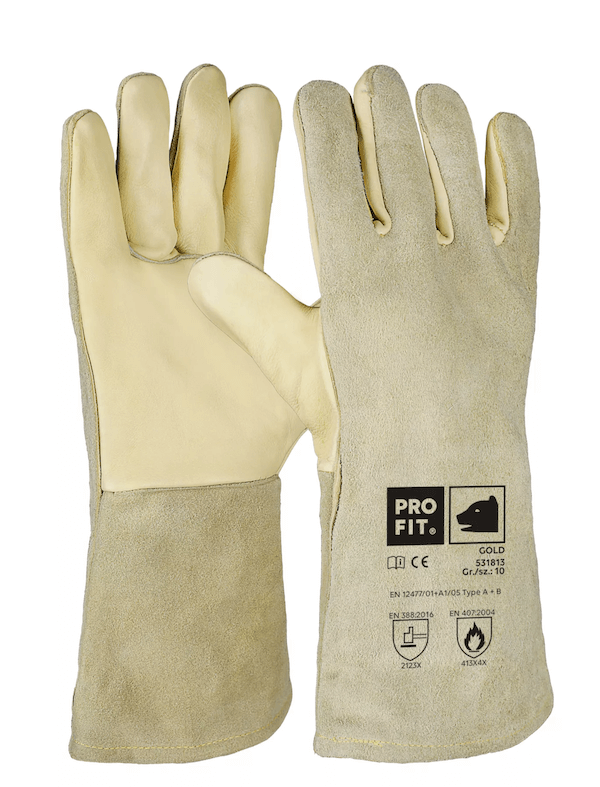
Material und Schutzanforderungen des Hitzeschutzhandschuhs
Hitzeschutzhandschuhe für den Arbeitsschutz können in bestimmten Fällen mit so genannten Nitril-Punktnoppen versehen sein. Die Noppen sorgen für mehr Sicherheit und Griffigkeit beim Greifen von Gegenständen.
Unter dem Begriff Hitzeschutzhandschuhe können auch Schweißerhandschuhe zusammengefasst werden, die besonders gegen Strahlungswärme und Kontaktwärme beständig sein müssen. Gerade bei Schweißarbeiten entsteht neben der Kontaktwärme auch Strahlungswärme. Einige Modelle von Hitzeschutzhandschuhen sind daher auch mit Stulpen ausgestattet, die häufig aus Aramid bestehen, um zusätzlich die Gefahr von Verbrennungen an den Unterarmen zu verringern.
Arbeitshandschuhe gegen Hitze können innen mit Baumwolle gefüttert sein. Für die Außenseite werden z.B. Kevlar, das aus Aramidfasern besteht, Leder, Polyamid und Acryl verwendet. Die Handschuhe sind in verschiedenen Größen erhältlich, um für jede Handgröße den optimalen Schutz zu bieten.
Hitzeschutzhandschuhe entsprechen den Normen EN 388 (mechanische Risiken) und EN 407 (Hitze und/oder Feuer), in denen die jeweiligen Prüfwerte für die Beständigkeit des Materials einschließlich der Leistungsstufen für Kontaktwärme festgelegt sind.
Schweißerhandschuhe müssen immer beide Normen erfüllen und sind daher nur mit der EN 12477 zu kennzeichnen, die beide Normen zusammenfasst. Hitzeschutzhandschuhe fallen in die PSA-Schutzkategorie II und sind somit für mittlere Risiken vorgesehen.
Wofür werden Hitzeschutzhandschuhe verwendet?
Hitzeschutzhandschuhe werden hauptsächlich in der Industrie verwendet. Dazu gehören sowohl die Metall- und Gummiindustrie als auch die Lebensmittelindustrie. Mit Hitze und Wärme, auch Kontaktwärme, wird aber auch im Handwerk, im Straßenbau, in Gießereien oder Bäckereien und in der Automobilindustrie gearbeitet.
Daher wird auch in diesen Bereichen das Tragen von Hitzeschutzhandschuhen als Bestandteil des Arbeitsschutzes empfohlen. Je nach Fall ist die Verwendung von Schweißerhandschuhen anderen Hitzeschutzhandschuhen vorzuziehen.
Schutzbereiche der Hitzeschutzhandschuhe
| Norm | Leistungslevel | |||||||||||
|---|---|---|---|---|---|---|---|---|---|---|---|---|
| EN 407 Hitze und / oder Feuer | 1 | 2 | 3 | 4 | 5 | |||||||
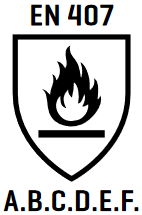 |
A | Brennverhalten | Dauer der Flammenbeständigkeit (Sekunden) | ≥ 20 | ≥ 10 | ≥ 3 | ≥ 2 | – | ||||
| B | Beständigkeit gegen Kontaktwärme | ≥ 15 Sekunden bei | 100 °C | 250 °C | 350 °C | 500 °C | – | |||||
| C | Beständigkeit gegen konvektive Wärme | Wärmeübertragung (Sekunden) | ≥ 4 | ≥ 7 | ≥ 10 | ≥ 18 | – | |||||
| D | Beständigkeit gegen Strahlungswärme | Wärmeübertragung (Sekunden) | ≥ 5 | ≥ 30 | ≥ 90 | ≥ 150 | – | |||||
| E | Beständigkeit gegen kleine, flüssige Metallspritzer | Erforderliche Tropfenanzahl für einen Temperaturanstieg von 40 °C | ≥ 10 | ≥ 15 | ≥ 25 | ≥ 35 | – | |||||
| F | Beständigkeit gegen große, flüssige Metallspritzer | Gewicht des geschmolzenen Metalls (in Gramm), um eine Oberflächenverbrennung zu verursachen | ≥ 30 | ≥ 60 | ≥ 120 | ≥ 200 | – | |||||
| X | Der Handschuh wurde nicht auf diese Eigenschaft geprüft oder das Prüfverfahren ist nicht für die Konstruktion des Handschuhs und / oder für das Material relevant. | |||||||||||
How do you determine the right size of your assembly glove?
Place a tape measure around the widest part of your hand (excluding the thumb) and measure the circumference. You can now use the table below to determine the appropriate size:
| 17.5 cm | 18 cm | 19 cm | 20.5 cm | 22 cm | 23 cm | 24 cm | 26 cm | 27 cm | 27.5 cm | 28 cm |
| S | S | S | S | M | M | L | L | XL | XL | XXL SIZE |
| 6 | 6,5 | 7 | 7,5 | 8 | 8,5 | 9 | 9,5 | 10 | 10,5 | 11 |

